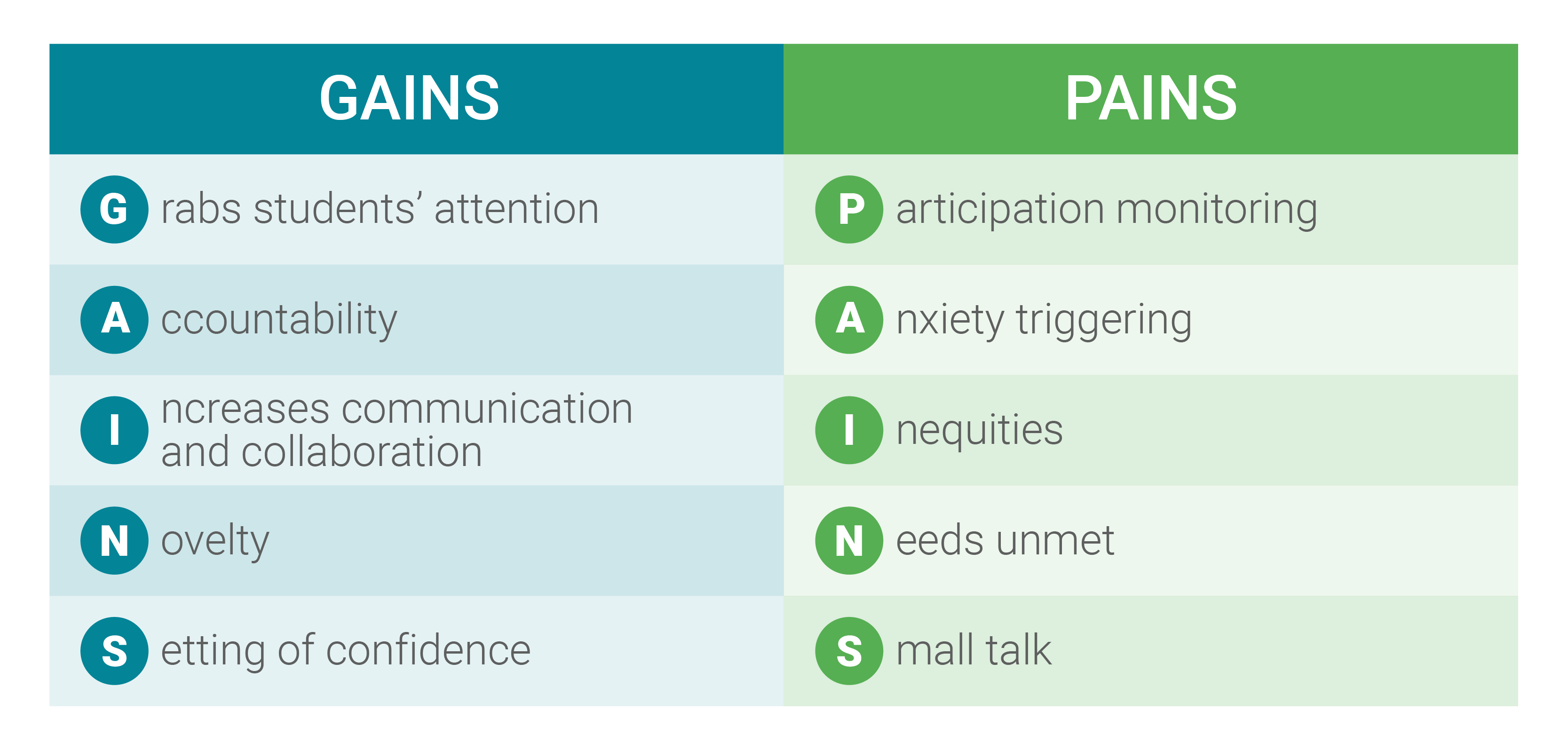As a collaborative teaching strategy, the think-pair-share approach has sparked controversy among teachers. Is it a valuable strategy you shouldn’t overlook or is it just not worth the time? Is it beneficial to the learning process or does it hinder progress?
Developed in 1981by Frank Lyman, a professor at the University of Maryland, think-pair-share (TPS) appeared as an alternative to peer instruction. With the objective to create a collaborative learning environment, TPS has gathered momentum after being repurposed for developing writing skills, also known as write-pair-share.
TPS has three steps:
- think: the teacher asks students to consider a question;
- pair: students turn to a partner;
- share: students discuss their answers.
You can apply TPS for any subject, especially in concept reviews, discussing questions, text analysis, brainstorming, quiz, review, topic development, etc.
Although it fosters a collaborative environment, some teachers have noticed some shortcomings after implementing it in their classrooms. As teachers, our job is to create a safe and engaging learning environment for all students, and here is where the strategy may fall short.
What are the gains and pains of the think-pair-share strategy?
Any teaching method, strategy, or approach has benefits and drawbacks. As teachers, it’s up to us to decide if TPS is good for our classroom, if and when it works, and how we can adapt it for our students. To make this easier, I’ve compiled a list of aspects covering the pros and cons:

The think-pair-share strategy gains
Here are the GAINS (or pros) of this strategy:
Grab students’ attention
TPS is the perfect way to get students back on track and back to the task. It allows them to think about new concepts, processes, opinions, or observations without interruptions or distractions. It helps students understand what they know and need, increasing engagement levels during lessons.
Read more: Teaching students how to manage digital distractions
Accountability
Students will verbalize their ideas to their peers during the pair and share stages. As a result, students take more responsibility for what they express as they take part in the learning process of their partners and the whole class.
Increase of communication and collaboration
Learning occurs better in groups through communication and collaboration. TPS creates the background for interaction which is a prerequisite of concept understanding and retention.
Novelty
In general, the most active and confident students take over most classroom discussions, but TPS allows everyone to be involved and feel included in the lesson. Students like to experience new ways of learning and manifest more curiosity and engagement as a result.
Setting of confidence
When students work with a partner, they may feel more confident to express their ideas and more open to feedback than directly sharing opinions or observations with the whole class. It provides the validation they need to speak out in front of the entire class.
The think-pair-share strategy pains
Here are the PAINS (or cons) of this strategy:
Participation monitoring
TPS is an activity that involves all students at once. In classes with more than 12 students, monitoring participation is challenging. You won’t be able to assess every student’s contribution, which is detrimental to the learning process. They can’t receive timely, accurate, and personalized feedback. It’s also a problem for teachers because they lack an objective perspective on each student’s involvement.
Read more: 7 Activities to improve online class participation rates
Anxiety triggering
For some students, speaking to other peers can be nerve-wracking even if they have time to think or share the ideas in advance with a partner. Just the thought of expressing their opinions can trigger anxiety attacks which will negatively impact their learning.
Inequities
Although you may change the pairs from time to time, you cannot control who shares the information with the class. There will always be students who prefer to let others take center stage. In this case, TPS doesn’t favor the shy or anxious and creates inequities among students.
Needs unmet
Since you can’t monitor every student or control who will share ideas with the entire group, you’ll have students whose needs remain unmet. They are the ones too anxious to speak up and too afraid of rejection to fully participate in the activity, which doesn’t allow them to evolve and reach the expected learning milestones.
Small talk
When students pair with a partner, they will inevitably waste time on small talk, irrelevant for the activity itself. In this case, you to observe them and help them refocus constantly.
Tips to consider when using TPS with your students:
To make it for your classroom, here are my top five tips:
- Give a reasonable amount of time for students to think individually about the topic;
- Let students choose the partner to pair with;
- Try to engage everyone in sharing their ideas with the whole class;
- Create a learning environment based on confidence and mutual respect while disapproving any behavior that undermines others;
- Use the strategy in moderation to avoid a pattern that will be more boring than engaging.
In conclusion
TPS is a teaching and learning strategy that promotes communication and collaboration among peers. You students will share information, observations, and opinions while learning from each other. While there are some pros and cons, the overall strategy can work for any classroom and subject.
As teachers, we need to manage the activity for their benefit and offer support and feedback to encourage them to make their ideas heard.